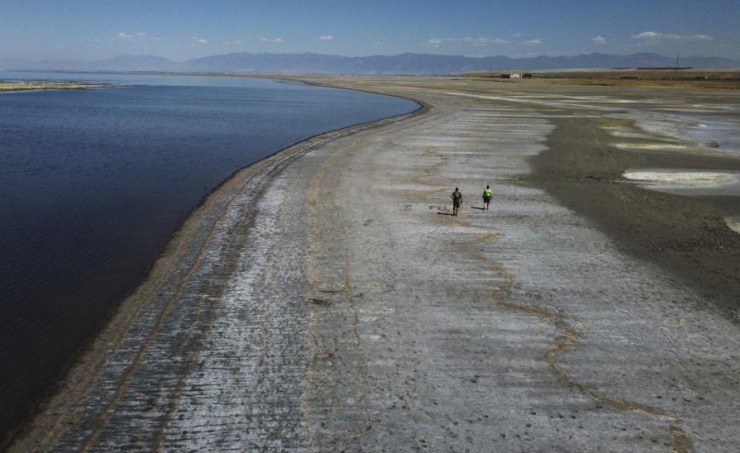Sacramento, Sept. 7 (BUS): An extreme western heat wave has pushed California to the brink of ordering blackouts, but the state’s electrical grid has managed to handle record demand.
The state’s 39 million residents were warned Tuesday that demand — some of it from people running air conditioners — could outpace supply as temperatures in many areas soared above 100 degrees Fahrenheit (38 degrees Celsius).
The California Autonomous System Operator (CAISO), which oversees the electrical grid, has issued a Phase Three emergency power alert — one step below that requires utilities to initiate periodic outages to relieve stress on the system. The move allowed it to rely on emergency power sources, the AP reports.
Demand swelled late afternoon into the evening, as everyone from Governor Gavin Newsom to the state’s Legal Marijuana Business Monitoring Agency urged people to turn off lights and reduce power or use backup generators.
Kaeso said Tuesday’s peak electricity demand was 52,061 megawatts, much higher than the previous high of 50,270 megawatts recorded on July 24, 2006.
While there were no blackouts in large areas, two outages were reported in the San Francisco Bay Area in the cities of Palo Alto and Alameda, affecting several thousand customers for about an hour.
Demand slumped as the evening waned, businesses shuttered and plunged sharply after CAISO sent a message on its mobile app begging customers to cut back on their use, warning that “power outages may occur unless action is taken”.
The Phase 3 alert ended at 8 p.m. without a major interruption in patrol. CAISO tweeted that “Consumer preservation has played a huge role in protecting the reliability of the electrical grid.”
Even without deliberate blackouts, tens of thousands of people found themselves without electricity in Northern California.
About 35,700 people lost electricity in Silicon Valley and the southern and interior areas of the San Francisco Bay Area, and most of the outages were heat-related, Jason King of Pacific Gas & Electric said Tuesday night. There was no word on when the electricity would resume.
Meanwhile, Western nations were still grappling with one of the hottest and longest September heat waves on record. Temperatures began to rise last week and the National Weather Service warned that dangerous temperatures could persist into Friday, despite some slight moderation.
Sacramento, the California state capital, hit an all-time high on Tuesday at 116 degrees (46.7 degrees Celsius), breaking a 97-year record.
Sacramento resident Debbie Chang was walking around the Capitol Park on Tuesday morning, pulling a wagon of Pop Tarts and water to distribute to the homeless. She lives in an old house that relies on wall-mounted units that she says don’t work well. The temperature reached 91 degrees (33 degrees Celsius) in her home on Monday night.
“The past few years in California have been very difficult,” she said. “I really love this state. And I never imagined I’d want to live outside of California, unless it’s possible internationally. But it’s very difficult.”
Sacramento County officials have used air-conditioned lobbies in some of their public buildings as cooling centers for people who have nowhere else to go and are offering free transportation to people who can’t get there. Officials have even distributed hotel vouchers to some homeless people through a program they usually keep for the winter, according to county spokeswoman Jana Hines.
“While a lot of people can stay home, a lot of people don’t have a home to stay in,” Haynes said.
In government office buildings, thermostats are set to 85 degrees (29 degrees Celsius) at 5 p.m. to save electricity.
Six places in the San Francisco Bay Area and the Central Coast recorded all-time record maximum temperatures, including Santa Rosa with 115 degrees Fahrenheit (46 degrees Celsius).
In neighboring Nevada, Reno’s 106 F (41 C) Tuesday was the hottest on record in September and broke the previous record for that date, 96 F (35.5 C) in 1944. It came within two degrees of the highest It has absolutely for any day or month of 108 F (42 C), defined in July 2002 and equivalent in July 2007, according to the National Weather Service.
In Salt Lake City, Utah — a city at more than 4,000 feet (1,219 meters) — temperatures were about 20 degrees higher than normal, reaching 105 F (40.5 C) on Tuesday, the hottest September day Recorded temperature dating back to 1874.
Scientists say climate change has made the West warmer and drier over the past three decades and will continue to make weather more extreme and more frequent and destructive of wildfires. In the past five years, California has experienced the largest and most devastating fires in the state’s history.
A wildfire that began Friday in Northern California’s grassland has killed two people, and another broke out on Monday and spread rapidly in Southern California’s Hemet region, killing two people. Authorities said they were found in the same area and apparently died while trying to escape the flames.
